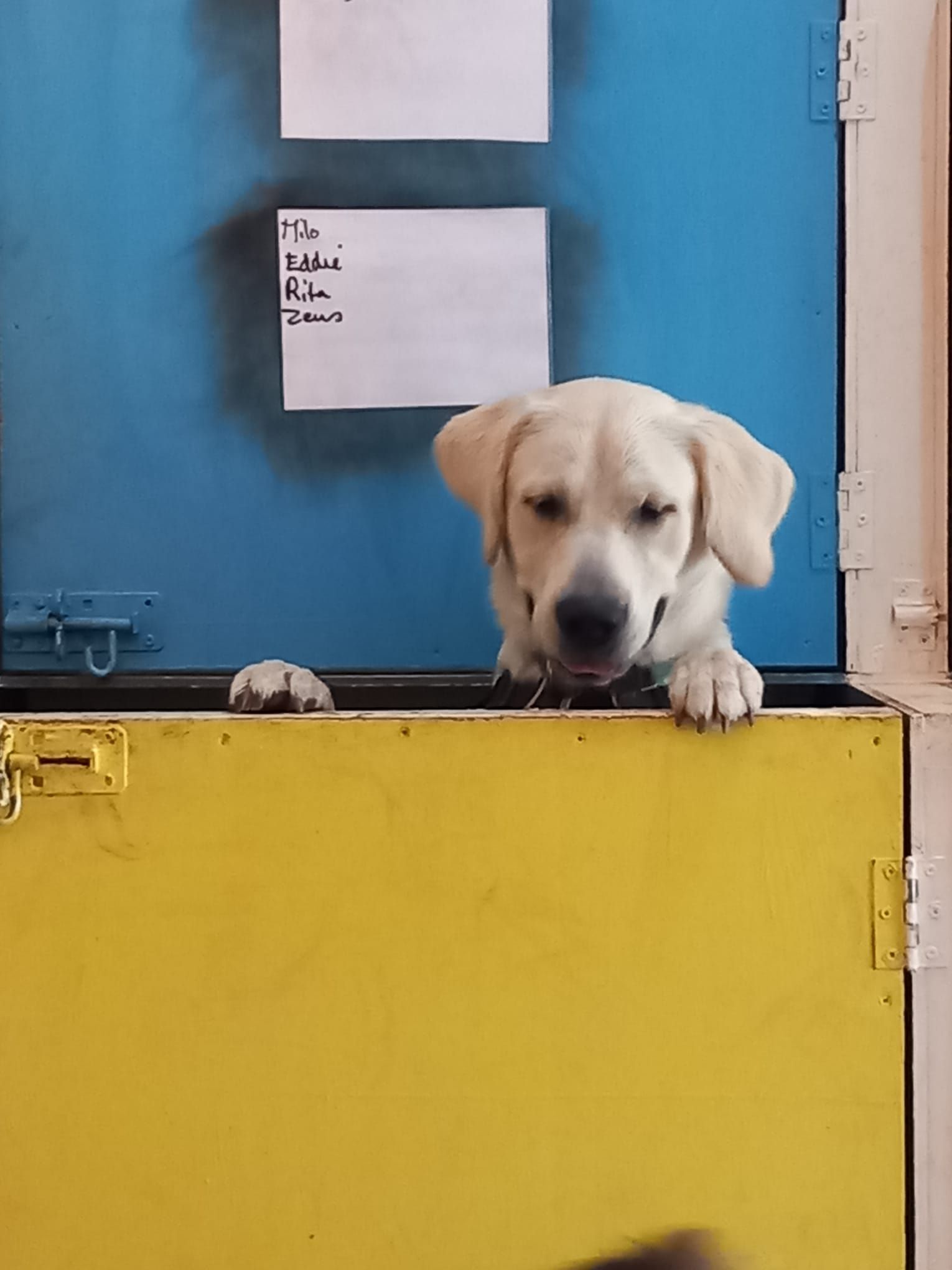How to desensitise your pet to fireworks
Why do dogs react badly to fireworks?

As their hearing is so acute, dogs can find fireworks and other unexpected loud noises stressful. Fireworks go off at irregular intervals, with no warning and no way of knowing how long the loud bangs and whistles will go on for. All of this triggers disorientation, anxiety and distress.
Fortunately, this reaction isn’t inevitable for all dogs. It’s possible to help dogs get used to loud noises so that they eventually have a calmer response. It takes patience and perseverance, but it’s well worth the effort. The reward is a happy, calm pet who can endure the experience of hearing fireworks without feeling distressed and running away to hide.
What is noise desensitisation?
Desensitisation (DS) for dogs is the gradual reduction in reaction to a source of anxiety over time, and counterconditioning (CC) is the changing of an emotional reaction to a source of anxiety, from a negative/anxious response to a positive response.
With fireworks, the process involves exposing your pet to audio recordings of fireworks over a few months, very quietly at first and gradually increasing the volume. To get the best results, we recommended that you start at least six months before fireworks season.
What you’ll need
Before you start, make sure you have the following:
- A safe haven: a calm, quiet space to carry out the DSCC training – establish this a few weeks before you begin. You might like to spray the area with a pet-friendly pheromone, which can help ease stress and anxiety.
- Audio recordings of fireworks – there are some available from link below.
- Some of your dog’s favourite treats and toys
- Time to dedicate to the training: you’ll need several sessions a week
How to desensitise your dog to loud noises
When your pet is in their safe haven, start to play the fireworks audio at a very low level – so low that your pet either doesn’t respond at all or reacts by just turning towards the source of the noise. This reaction should only last 10 to 30 seconds.
After each noise on the recording, to change your pet's emotional response to the noise, throw a pea-sized piece of their favourite food onto the floor for them.
Once they’ve stopped showing any signs of anxiety in response to the sounds and seem able to engage in other activities happily while the audio is playing, you can increase the volume. Give your pet 10 to 30 seconds to get used to the increased volume, then start to interact by offering some treats or toys after each loud noise.
When your pet is coping well at the volume you have selected, start to vary the volume more. Make the general trend that the volume increases, but do vary it lower as well as higher, this will give you a better response. Go very slowly; the more time you’re able to take over this, the more likely you are to have a positive result. Keep going until you can play the recording at a volume that mimics the sound level of real fireworks. Reward your dog’s calm response after each loud noise, using praise, play and treats – this will reinforce good behaviour.
Problem solved?
Like any behavioural change, helping dogs respond differently to fireworks can be challenging. However, training your pet to react calmly to loud noises means that special occasions involving fireworks, such as Bonfire Night and New Year’s Eve, should become less stressful for them – and you. If they do still show an anxious response, don’t worry; it’s normal.
How your vet can help
Your vet will be happy to help you embark on a desensitisation programme, so don’t hesitate to contact them. There may be some cases where the noise phobia is severe, and your pet would benefit from the help of a dog trainer. If you have any concerns at all about your dog’s behaviour, discuss them with your vet. They will also be able to check there isn’t an underlying medical reason for their stress, such as a thyroid problem.
https://www.youtube.com/watch?v=AINzMizjDvw&t=1517s










